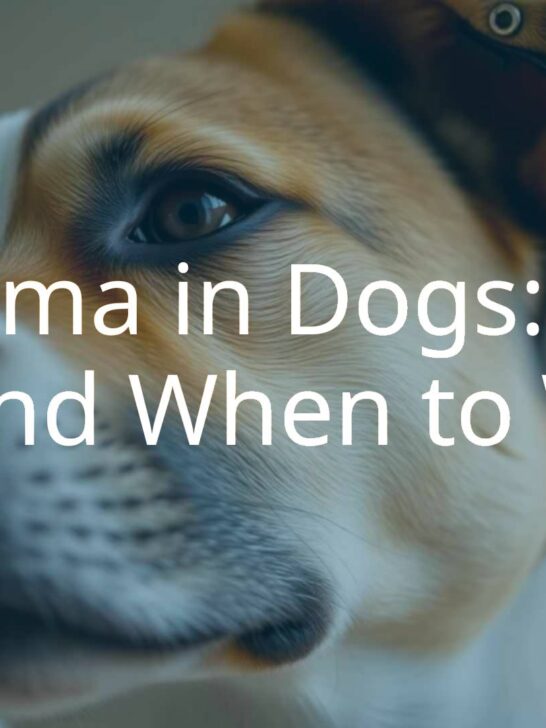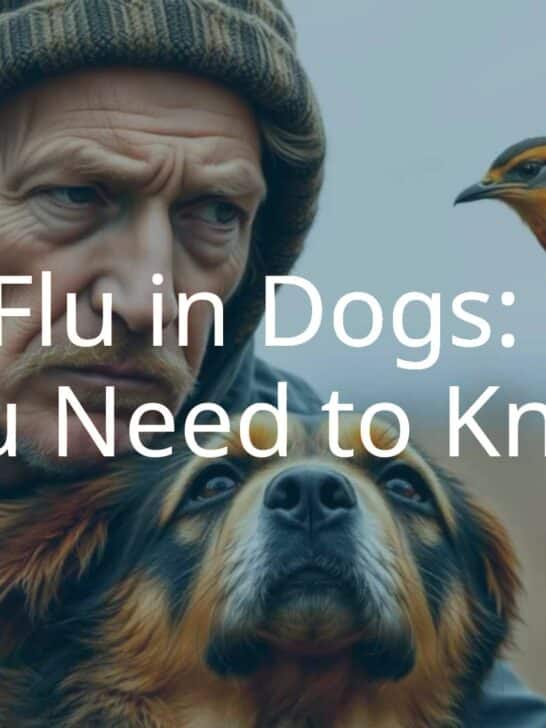Health Issues Common in Large Dog Breeds
Giant dog breeds have a special place in our hearts. Many pet owners adore Saint Bernards, Great Danes, Mastiffs, Irish Wolfhounds, and German Shepherds. Their large physiques are complemented by even larger hearts and charming temperaments.
But let’s take a pause here. Owning a large breed dog comes with its own set of challenges, especially when it comes to their health.
These breeds are prone to numerous health issues, including hip dysplasia, bloat, and more. They might be giant in stature, but unfortunately, they leave us faster than smaller dog breeds.
To keep your large canine companion at their best, you should pay much attention to their health.
This article explores the most common conditions that affect large breeds of dogs. It also presents their symptoms, so you can quickly determine what is happening and take the necessary steps.
Let’s get started.
10 Most Common Health Problems in Large Breed Dogs
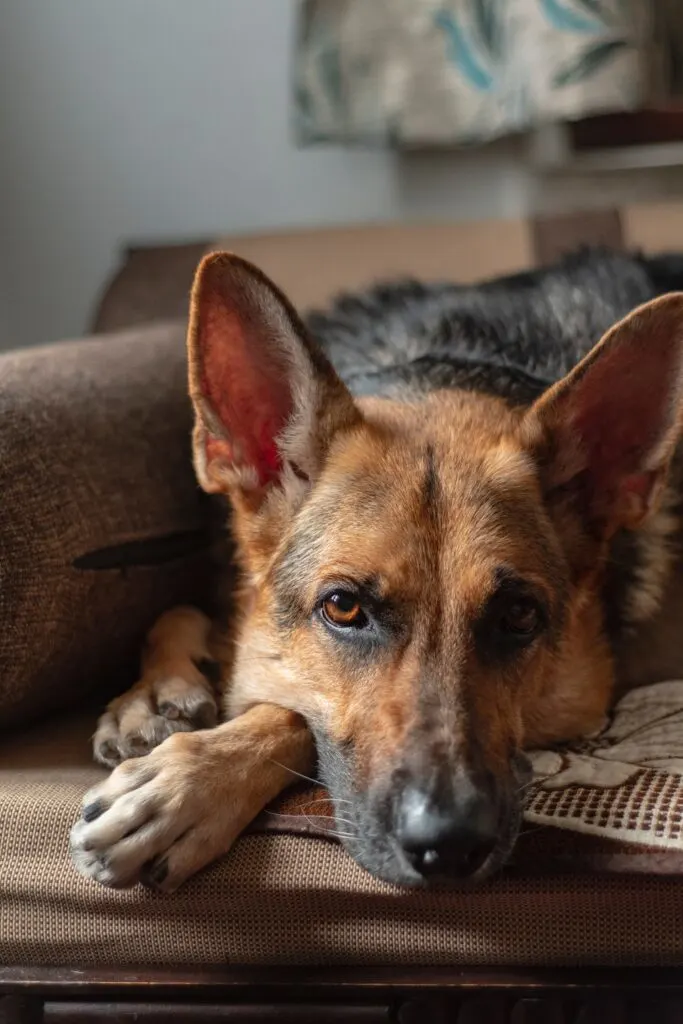
When it comes to health, your pooch’s size and genetic makeup often play a significant role. It pertains particularly to larger dog breeds. They are susceptible to specific health conditions that smaller dogs may not typically encounter.
There exists a variety of health issues that primarily affect larger canine breeds. These disorders range from minor health issues to more significant ailments that can adversely affect the quality and span of their lives.
Here are some of these common health problems observed in giant dog breeds.
Hip Dysplasia
Canine Hip Dysplasia (CHD) is a genetic condition that affects dogs as they grow, causing instability in their hip joints. It is particularly common in big dogs, including German Shepherds, Labradors, and Great Danes.
Over time, this condition can cause significant discomfort for our canine friends.
Hip dysplasia causes the hip joints to develop abnormally, resulting in pain, difficulty walking, and lameness.
What causes CHD? Genetics play a big part.
However, other things can worsen the condition. For instance, quick weight gain and excessive growth caused by overfeeding can speed up the development of CHD in dogs.
Veterinarians recommend regular exercise, maintaining a healthy weight, and providing joint supplements to dog breeds prone to this health issue.
Elbow Dysplasia
Like hip dysplasia, elbow dysplasia is a genetic condition affecting the elbow joints in large dogs. Common symptoms include lameness, joint swelling, and arthritis.
Due to persistent wear and tear, an elbow joint malfunction can also potentially lead to osteoarthritis.
Elbow dysplasia is commonly seen in dogs like Golden Retrievers, Cocker Spaniels, Rottweilers, and Bernese Mountain Dogs.
Treatment options for this orthopedic issue include medications, physical therapy, and sometimes surgery to relieve pain and improve mobility.
Arthritis
Another health concern in giant dogs is arthritis, which affects about 20% of dogs of all ages. It is characterized by the degeneration of joint tissues. This condition shows up in dogs of varying sizes, but it’s notably prevalent in large breeds.
The bigger body mass of giant breeds means their joints bear additional weight and stress. This increased pressure can speed up the onset of arthritis.
Age is another significant factor. The typical wear and tear that come with aging make older dogs particularly susceptible to this health issue.
Dogs with arthritis may exhibit symptoms such as stiffness, limping, difficulty in rising or laying down, and reluctance to exercise or play. They may also show signs of pain when their affected joints are touched.
Bloat
Bloat, also known as gastric dilatation-volvulus (GDV), is a life-threatening condition commonly affecting large and giant breed dogs. It occurs when the stomach twists and fills with gas, leading to a blockage and preventing the dog from vomiting or belching.
The Saint Bernard dog is known to be prone to this condition.
If you notice an enlargement of your dog’s abdomen, retching, salivation, and restlessness, bring your dog to the vet right away.
Immediate veterinary attention is required, as bloat can quickly become a medical emergency. Surgery is usually necessary to untwist the stomach and prevent further complications.
Heart Conditions
Heart conditions can affect dogs of all sizes, but they are particularly prevalent in large dog breeds and senior dogs.
For example, dilated cardiomyopathy is a common heart condition that affects these breeds. It is characterized by the weakened and enlarged chambers of the heart, leading to a decrease in its pumping ability.
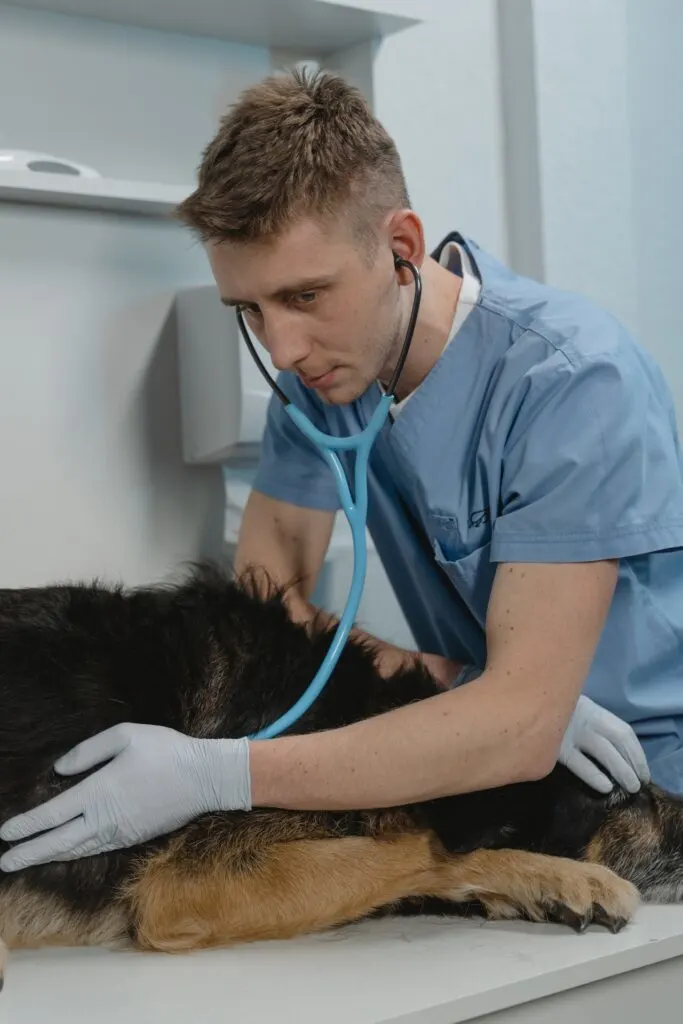
This condition can cause symptoms like coughing, difficulty breathing, and weakness.
Aortic stenosis, on the other hand, refers to the narrowing of the aortic valve. It impedes blood flow and strains the heart. Dobermans are at an increased risk of developing this condition. Symptoms commonly associated with it include exercise intolerance, persistent coughing, and fainting.
Regular cardiac screenings and early intervention are crucial for managing aortic stenosis.
Cherry Eye
Cherry Eye is a prominent eye health issue, particularly in large and giant dog breeds like the Newfoundland. This condition causes the gland in the dog’s third eyelid to become prolapsed and visible. It typically appears as a red mass or swelling in the corner of the eye.
The most common known cause of Cherry Eye is congenital weakness. Specifically, it occurs due to an inherent frailty in the gland’s attachment to the eye. Surgical intervention is often required to correct the cherry eye and prevent future complications.
This condition is not selective. It can manifest in either one or both eyes of the affected canine. The issue can occur regardless of which eye is stronger or gets used more frequently.
Other Eye Issues
Big dogs, like Labrador Retrievers, can also suffer from other eye problems. These can include cataracts, progressive retinal atrophy, and retinal dysplasia.
Entropion and ectropion, two conditions affecting the eyelids, are especially nasty. These conditions can lead to discomfort and irritation in your pet.
In the case of entropion, there’s an inward roll of the eyelids. Conversely, ectropion makes the lids roll outward. Both these conditions have an impact on your pet’s eyes.
For mild forms of entropion or ectropion, certain treatments can offer relief. Eyedrops and ointments are often suggested as they protect the delicate cornea and lining of the eyes.
However, if your pet suffers from a severe form of either condition, more drastic measures might be needed. In such cases, surgery could be the recommended course of action.
Regular check-ups help a lot, too. By having your dog’s eyes examined by a vet who specializes in ophthalmology, you can catch these problems early on.
Hair Loss and Skin Conditions
Many large dog breeds suffer from hair and skin problems. One of the most common issues among these dogs is atopy. It’s similar to human hay fever and can lead to uncomfortable skin conditions.
Allergies are also very prevalent in those dogs. These hypersensitivity reactions can result from a host of things, ranging from certain foods and dust mites to flea bites and pollens.
Hot spots are another concern for big dog owners. These painful, swollen patches appear on the dog’s skin and can become quite hard to manage if not addressed early.
Good hygiene is critical to managing these issues. Make sure to clean your pet and its surroundings regularly. A clean environment can greatly reduce exposure to allergens.
Another good practice is proper diet management. Providing your pet with a healthy diet rich in essential nutrients can work wonders toward boosting their overall immunity and skin health.
Spinal Issues
If you own a Doberman or some other large breed dog, they may also be susceptible to various spinal issues. Two primary conditions to stay aware of are Intervertebral Disc Disease (IVDD) and Wobbler Syndrome.
These diseases can cause severe discomfort to these dogs. Yet, they don’t hit at once. Often, the symptoms gradually creep up, leading first to mobility troubles.
IVDD affects the cushions between the bones of the backbone. When these malfunction, it leads to pain. Over time, this disease can inflict an even more devastating blow — paralysis.
Meanwhile, with Wobbler syndrome, large or giant dogs experience neck pain. They may also have a wobbly walk.
Identifying these conditions as soon as possible is crucial for your pet’s health. Early diagnosis ensures better management of the disease. It could mean medication or potential surgery to alleviate symptoms and increase quality of life.
But remember, each case is unique. What works for one pet may not be effective for another. Therefore, consult with your vet for specific advice and treatment options for your dog’s spinal issues.
Patellar Luxation
Patellar luxation is a common condition affecting a large dog’s health. It causes the dislocation or slipping of the kneecap (patella) from its normal position. It can occur in both small breeds and large breeds, but it is particularly prevalent in big and purebred dogs.
The condition can be genetic or develop due to trauma. It is also more common in certain breeds due to their skeletal structure.
Symptoms of patellar luxation include:
- Intermittent or persistent lameness,
- Difficulty extending or flexing the affected leg,
- Hopping or skipping on three legs.
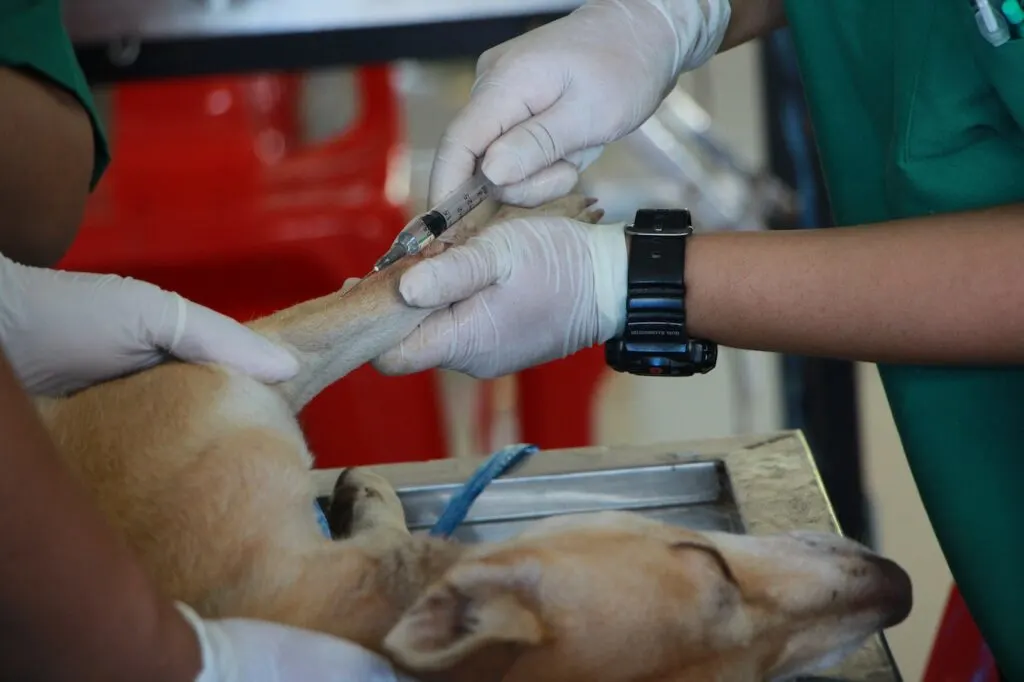
Final Thoughts
Large breeds are predisposed to a range of health issues that require careful attention and proactive measures. Conditions such as hip and elbow dysplasia, arthritis, and bloat can significantly impact the well-being of our magnificent four-legged buddies.
Regular vet appointments are essential for your dog’s health. The vet can keep track of any potential problems and address them early.
Another way to keep these major health issues under control is by investing in pet insurance. It can help cover the costs of any treatments or procedures your large breed dog may need.
Early detection and timely medical interventions can improve your dog’s quality of life and ensure they lead a happy, long, and comfortable life.
With the right care and support, your furry friend can continue to bring joy and companionship to your family for years to come.















